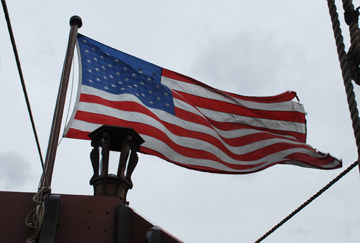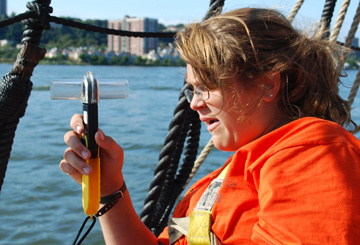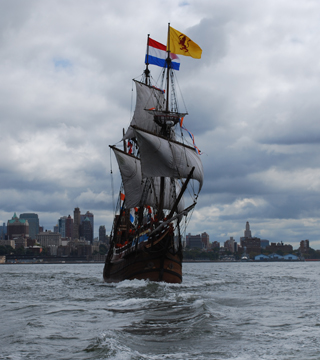 |
|
|
Mouse over to test the wind.
 |
Of all the weather phenomena our students study, the speed and direction of the wind have the most immediate effects on our ship. Not surprising, considered that the Half Moon is a sailing vessel! In 1609, Hudson's progress along the narrow river was often at the mercy of favorable winds.
|

We use hand-held anemometers to accurately measure the wind's speed. As the wind blows through and spins an anemometer's fan, the electronic instrument records the wind's highest and average speeds.
When we study wind speed in depth for research projects, we often simultaneously compare wind speeds on deck and at the mast tops. Our findings during these experiments indicate that the wind is consistently stronger at higher elevations.
|

This would have come as no surprise to the shipwrights who constructed the original Half Moon in 1608; after all, top sails are desined specifically to harness those higher, more powerful gusts.
|

Our time in New York Harbor was dominated by strong easterly winds, generated by a pair of stalled pressure fronts -- one to the southwest, and one to the northeast -- which combined to form a wind tunnel effect, funneling wet, gusting winds from far out in the Atlantic right up into the Hudson River Valley. While these strong winds did allow us a few nice days of sail, it could sometimes be overwhelming. Most significantly, day two of the Flying Dutchman race was cancelled due to high winds, followed by a general small craft warning the next day. Of course, nothing we've experienced on this trip can compare with the winds put out by Hurricane Floyd during the 1999 Fall Voyage of Discovery, which Kaas Collens experienced personally as a student crew member.
|
|
|